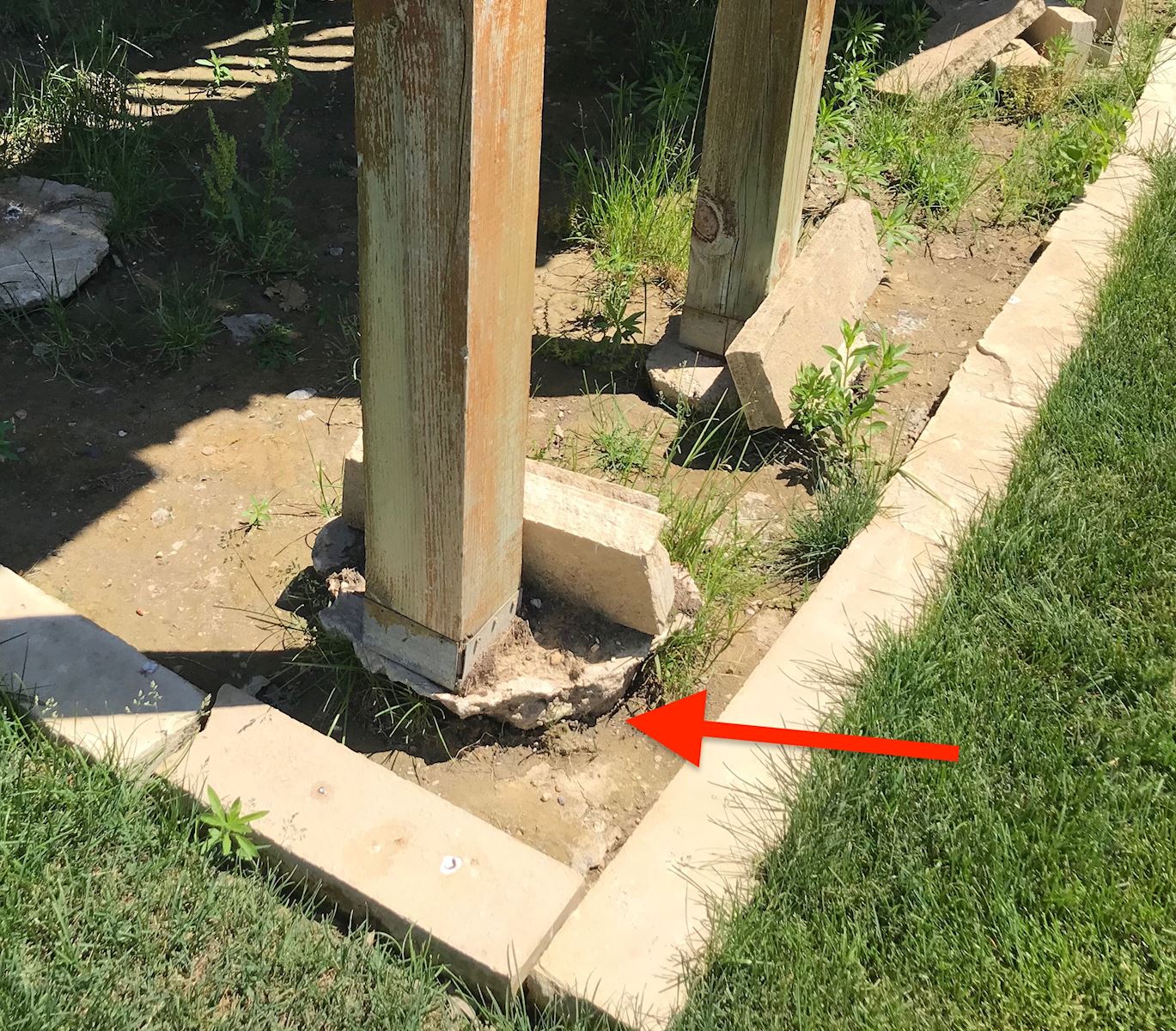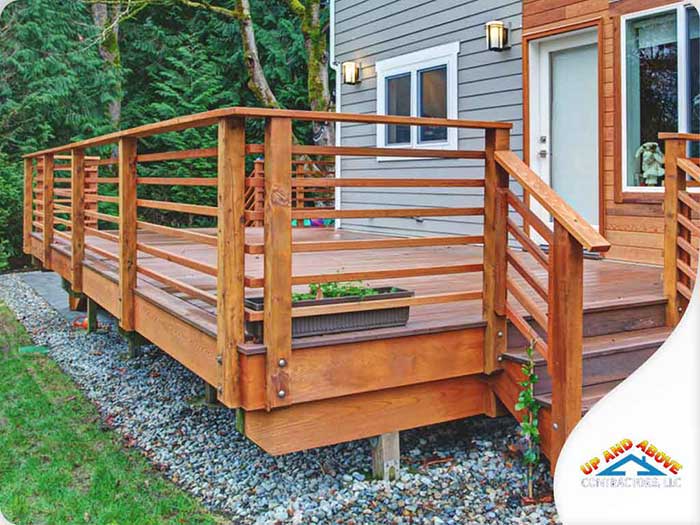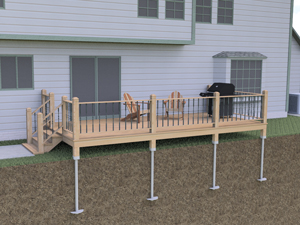Architectural Integrity Matters: Picking the Right Deck Footings for Your Outdoor Job
Architectural Integrity Matters: Picking the Right Deck Footings for Your Outdoor Job
Blog Article
Make Sure Stability and Durability With Correctly Mounted Deck Footings
Deck grounds might not be the most extravagant facet of deck construction, but they play an important function in making certain security and long life. In this conversation, we will explore the significance of appropriate deck footings, aspects to consider throughout setup, various types of footings offered, step-by-step setup guide, and upkeep pointers for making certain resilient footings.

Value of Proper Deck Footings
Why are effectively installed deck footings critical for the stability and durability of your deck? The response exists in the fundamental role that deck footings play in sustaining the weight of the whole framework. Deck grounds are the foundation on which the deck rests, moving the lots from the deck to the ground. It can lead to a variety of concerns that endanger the security and long life of the deck. when grounds are not properly installed.
First of all, appropriately set up deck footings distribute the weight of the deck evenly, avoiding any type of unequal settling or sinking. This is particularly essential in areas with unsteady soil, as it helps to mitigate the risk of the deck moving or breaking down. Additionally, well-installed footings ensure that the deck remains degree, protecting against any kind of architectural damages that can take place when a deck comes to be unequal.
Secondly, correctly mounted grounds provide a strong support for the deck, stopping extreme movement and persuade. This aids to preserve the structural integrity of the deck, decreasing the risk of crashes or injuries. It also minimizes the wear and tear on the deck, permitting it to hold up against the aspects and routine use for a longer time period.
Aspects to Think About for Deck Footing Installment
When setting up deck footings, there are numerous essential factors to take into consideration for appropriate installation. Various dirt types have various load-bearing abilities, so it is crucial to perform a soil test to guarantee the grounds can support the weight of the deck and its residents. By taking right into account these aspects, you can guarantee the proper setup of deck grounds and delight in a secure and resilient deck.
Kinds Of Deck Footings to Select From
There are several different kinds of deck footings readily available for you to pick from. Each kind has its own benefits and downsides, so it's important to consider your certain needs and the problems of your deck before making a choice.
One common sort of deck footing is the concrete footing. This entails excavating holes in the ground and putting concrete into them to develop a solid structure. Concrete grounds are long lasting and provide superb stability, making them appropriate for decks in locations with challenging soil conditions or high wind loads.
Another choice is the helical pier ground, which is composed of a steel shaft with helical plates that are screwed right into the ground. These footings fast to set up and can be made use of in various soil kinds, consisting of sandy or clay dirts. They are also flexible, permitting easy leveling of the deck.
Sonotube footings are an additional preferred choice. These footings are developed by putting a cardboard tube in a hole and loading it with concrete. Sonotube grounds are reasonably simple to install and supply adequate security for smaller decks or in areas with less demanding soil problems.

When selecting the sort of have a peek at this website deck ground, it's critical to consider elements such as soil problems, deck dimension and weight, neighborhood structure codes, and personal choices. By selecting the ideal footing type, you can make certain the stability and longevity of your deck.
Step-by-Step Overview for Putting Up Deck Footings

Figure out the place: Begin by noting the exact setting of each ground utilizing risks and string (Deck Footings). Take into account any neighborhood building ordinance or regulations concerning obstacle ranges
Dig the openings: Utilize an article hole miner or an auger to dig the holes for the footings. Typically, a deepness of at least 36 inches is suggested for security.
Level the openings: Make certain that the bases of the holes are level (Deck Footings). This can be accomplished by utilizing a degree or a straight board throughout the top of the openings
Add gravel: Area a layer of crushed rock at the end of each hole to enhance drainage and protect against the ground from penetrating the soil gradually.
Place the footing forms: Place the footing creates into the openings, ensuring they are centered and degree. Usage risks to secure them in position.
Mix and pour concrete: Comply with the guidelines on the concrete mix bag to prepare the concrete. Pour the concrete right into the footing kinds, filling them entirely.
Smooth the surface: Make use of a trowel to smooth the surface of the concrete and get rid of any type of air pockets. Allow the concrete to cure according to the maker's instructions.
Upkeep Tips for Lasting Deck Grounds
Appropriate upkeep is essential for ensuring the long life and security of deck footings. By frequently checking and preserving your deck grounds, you can protect against damages and prospective safety and security risks. One important facet of maintenance is to routinely look for any kind of indications of damage, such as fractures or advice motion in the footings. If you her comment is here notice any issues, it is vital to resolve them quickly to avoid additional damage.
Normal cleaning is also essential for keeping deck footings. Debris, dust, and plant life can build up around the grounds, which can lead to moisture buildup and degeneration. Cleaning up the footings routinely, making use of a brush or a pressure washer, can help protect against these concerns and prolong the lifespan of your deck.
Along with cleaning, it is very important to keep the location around the grounds free from any obstructions. Prevent piling items against the footings or enabling plants to grow also close to them. These blockages can catch wetness and cause the footings to degrade with time.
Lastly, routine resealing of the grounds is recommended to protect them from moisture and other environmental variables. Applying a waterproof sealant can assist stop water damages and expand the lifespan of the footings.
Final Thought
To conclude, appropriate installation of deck grounds is critical for making certain stability and longevity of your deck. Elements such as dirt type, lots capacity, and neighborhood building codes need to be considered when picking the ideal kind of deck footings. Adhering to a detailed guide for setup and regular upkeep will help to ensure the footings stay resilient and durable.
In this discussion, we will explore the relevance of proper deck grounds, aspects to consider during installation, various kinds of footings offered, step-by-step installation guide, and maintenance tips for ensuring durable footings. Deck grounds are the structure on which the deck rests, moving the load from the deck to the ground.One usual kind of deck footing is the concrete ground. Insert the ground forms: Insert the footing forms into the openings, guaranteeing they are focused and degree.In final thought, appropriate installment of deck grounds is critical for making sure stability and durability of your deck.
Report this page